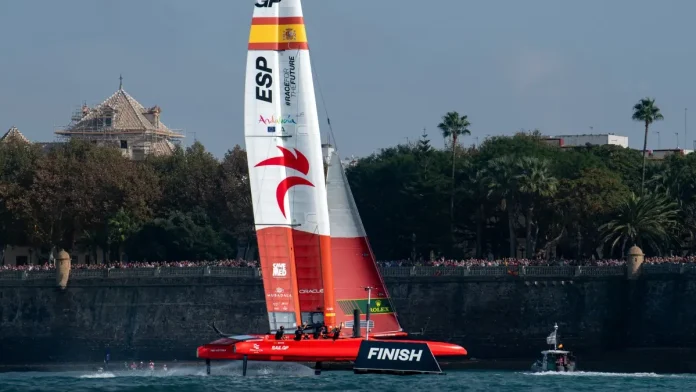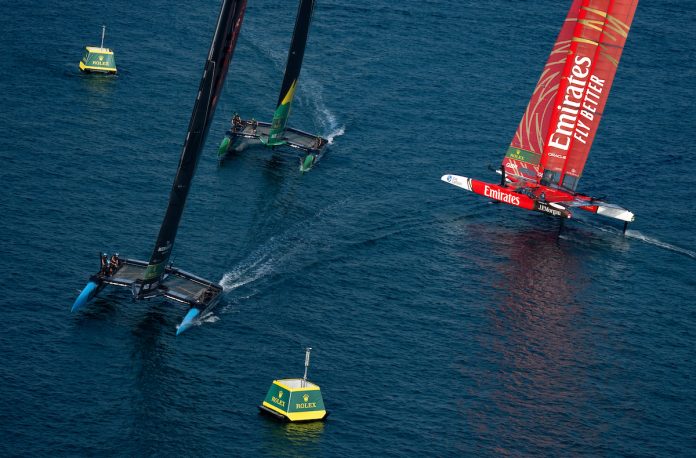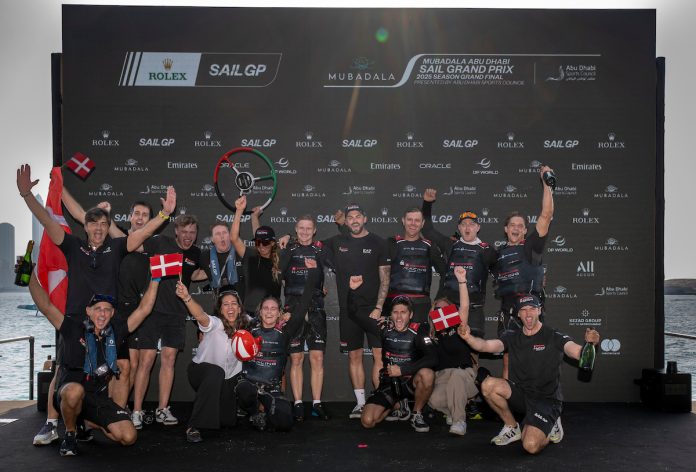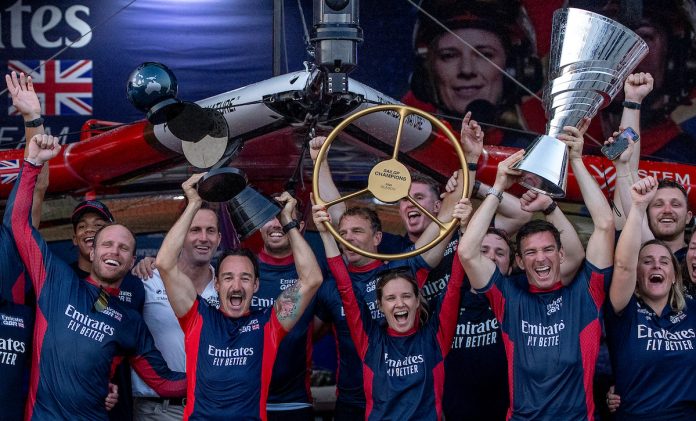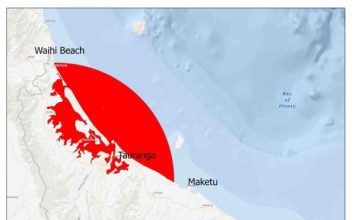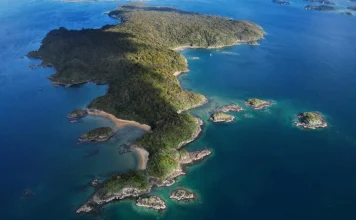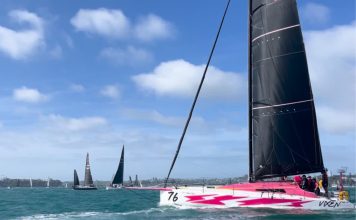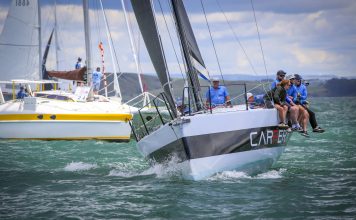Started smart, finish strong: the new standard in SailGP
Across the weekend, one pattern stood out: start line execution is becoming the most critical performance differentiator in SailGP. Gone are the days when sheer speed or reactive sailing could win races from behind. In New York, the start line was everything.
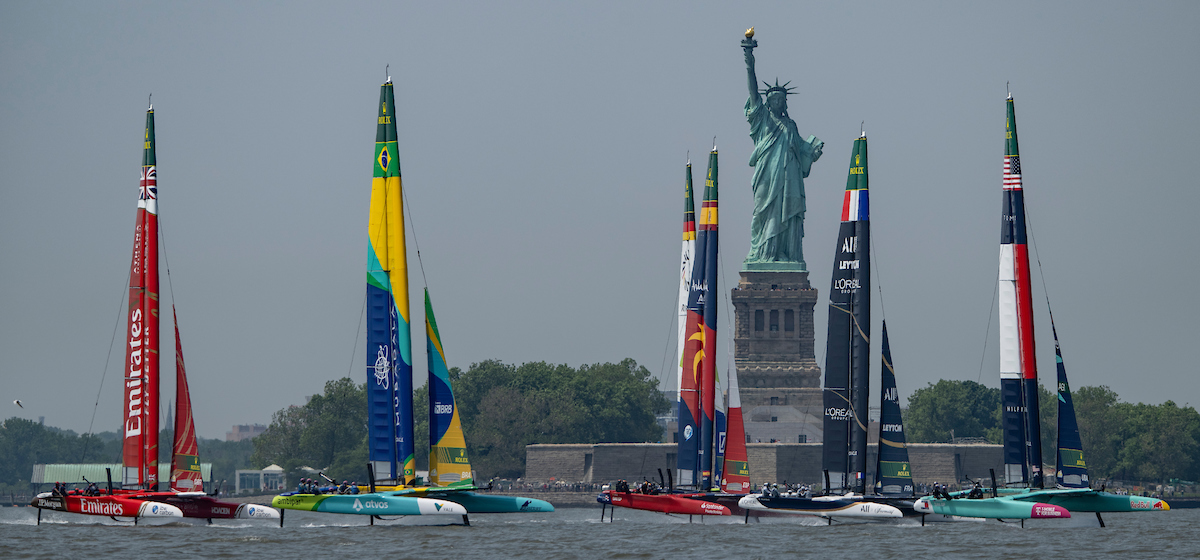
Mubadala Brazil and Spain proved this point emphatically. Both teams were closest to the line and fastest across it in their respective key races. Brazil crossed just 0.5 seconds after the gun from 7.5m away, while Spain launched 1.1 seconds after the gun from 13.7m — vastly outperforming the fleet averages of 2.6 seconds and 34.5m.
This is important. A boat closer to the line and moving early — even if it’s not the fastest — can establish control of the inside lane, dictate tactical positioning, and avoid dirty air (ask the Aussies, they’d tell you.) It’s a tactical foundation that allowed Spain to command the Final and Brazil to dominate their breakthrough fleet race. Both led into Mark 1 or regained it shortly after — a strong predictor of overall success.
Manoeuvres: why less is more
If start-line positioning sets the stage, manoeuvre discipline shapes the rest of the act. In high-performance foiling where each turn burns energy and breaks rhythm, fewer manoeuvres almost always correlate with better results.
Brazil again led on this front — just 7 manoeuvres in their winning race, the lowest in the fleet. Spain, who won the Final, executed 9. Compare that to New Zealand’s 10 in the Final, or Switzerland’s massive 52 manoeuvres across the event — the highest of any team — and the trend is obvious.
In a sport where stability means speed, manoeuvre minimisation isn’t just a tactical choice; it’s a performance imperative. The more you turn, the more you slow. The more you slow, the more you chase. And chasing, in this fleet, rarely pays off.
Flight time and ride height: staying airborne wins races
While SailGP has always been about flight, New York showed that how long and how well you stay airborne matters more than who foils fastest.
Both Spain and Brazil recorded 100% fly time in their key races. That means they were literally flying from start to finish — a clear factor in their consistent pace and efficient VMG (velocity made good). New Zealand also performed well here, with an 88.5% average flight time and the highest ride height at 86.3cm — a sign of technical stability.

But Spain went one step further in the Final. Despite a lower ride height (445.8mm), they maintained perfect foiling and generated the highest average speed of the Final at 59.1 km/h. France, by contrast, had a lower fly time of 94% and struggled to stay in touch.
In short: you can’t win on the water if you’re not consistently in the air. And managing that lift efficiently — not too high, not too low — is emerging as a hallmark of the top teams.
Speed in context: why fast isn’t always first
Speed sells headlines, but New York showed that the highest speeds don’t always win races. France and Australia topped the speed charts — 84.4 km/h — but Australia didn’t make the finals, and France came third in the New York Final. Spain, meanwhile, had a slightly lower top speed in the Final (83.3 km/h) but paired it with flight stability, minimal manoeuvres, and clean lanes.
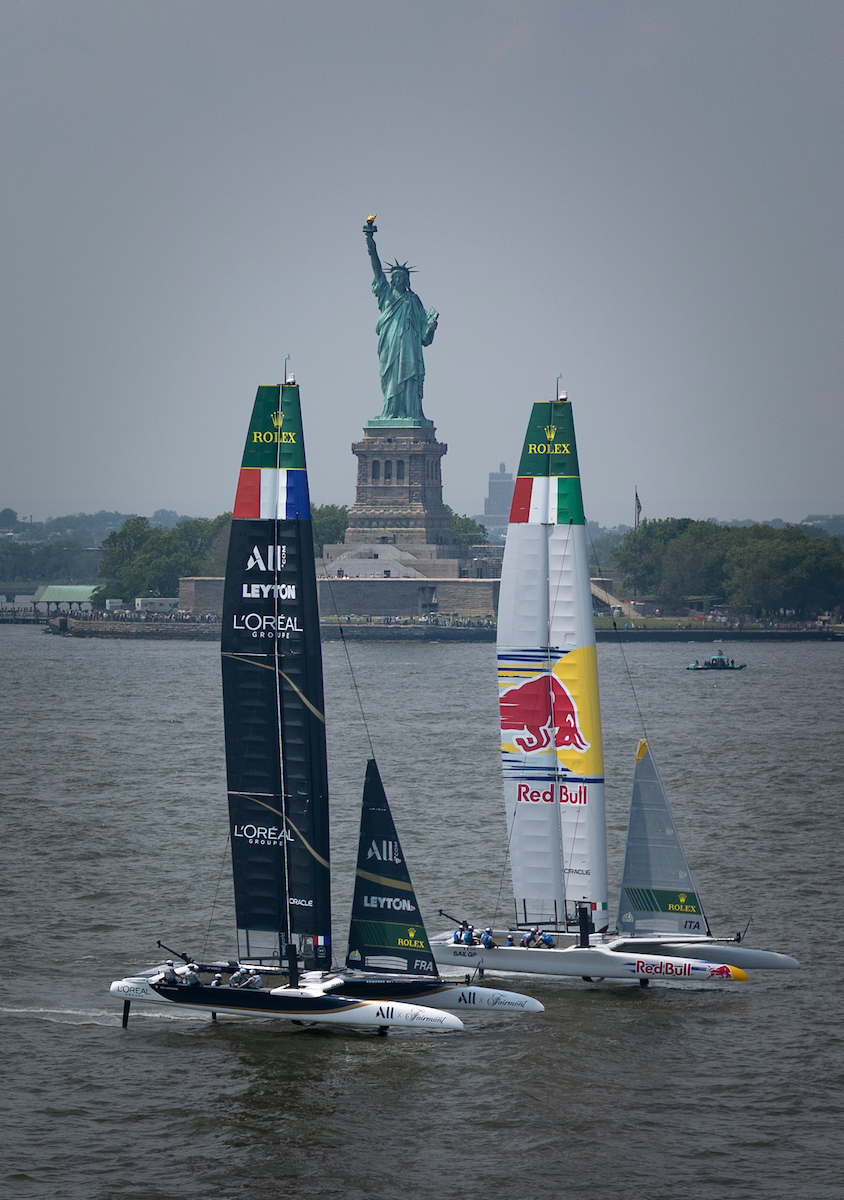
Brazil? Their top speed was the lowest in the fleet at 76.7 km/h, yet they won a race and nearly reached the Final. Their average speed was also below the leaders. But speed wasn’t their metric of success — consistency, control, and smart positioning were.
So while raw velocity matters, it’s now more of a dependent variable — a result of good decisions, clean lanes, and foiling efficiency — than a standalone measure of dominance.
Overtaking patterns: who can move through the pack?
France’s 16 overtakes made them the best movers through the fleet — suggesting both tactical nous and a recurring need to recover from poor starts. Mubadala Brazil, on the other hand, made just a few but decisive overtakes — climbing an average of 2.5 positions per race from Mark 1 to the finish, the biggest positional gain of any team.
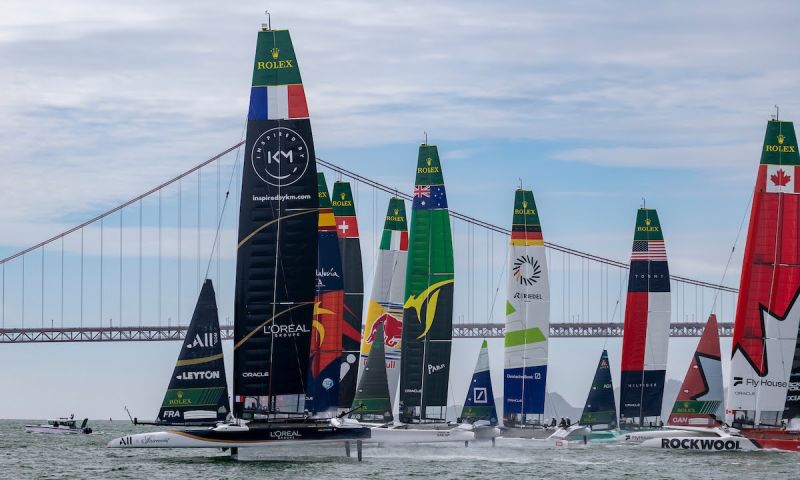
This tells us two things:
1) France is resourceful but inconsistent — fast enough to recover, but not sharp enough in the early phases. Brazil is efficient — they start in poorer positions but sail cleanly and finish strong.
2) Overtaking is useful, but excessive reliance on it is symptomatic of problems earlier in the race. Teams that avoid the need to overtake altogether — like Spain in the Final — tend to win more often.
Team under pressure: Emirates GBR’s slide
The outlier in this analysis is Emirates GBR. Once viewed as serious title contenders, they’ve now recorded back-to-back poor results — 7th in San Francisco, 8th in New York. Their performance curve is trending down, and commentators are questioning their ability to reset before their home event in Portsmouth.
What’s gone wrong? The data points to a team that’s trying to muscle through races. Emirates GBR was among the highest for manoeuvres, lowest for gain-per-manoeuvre, and nowhere near the top in start line execution. Their fall isn’t due to boat speed or capability — it’s rooted in decision-making and cohesion.
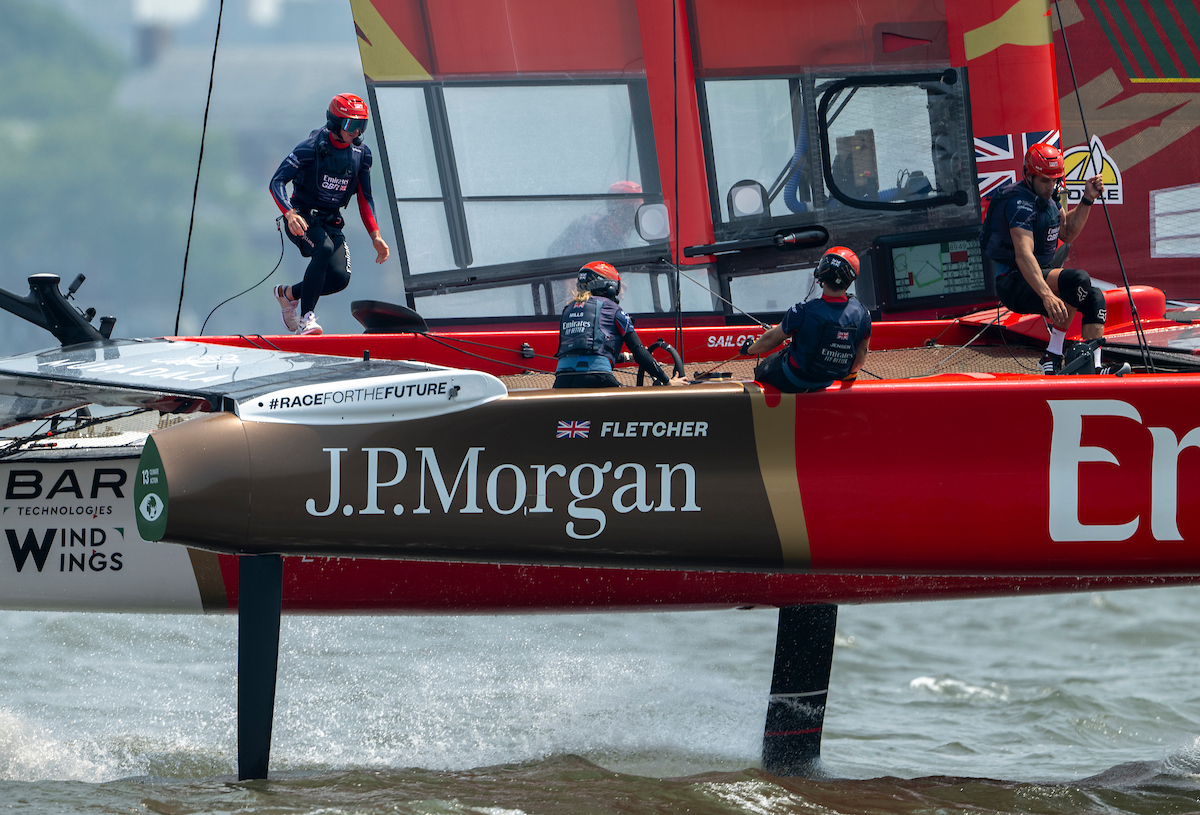
Portsmouth, then, becomes not just a race, but a litmus test. A home crowd, a six-week reset, and familiar waters could turn it around. But only if the team rebuilds its race structure around the proven success patterns shown in New York: start smart, move less, foil more, and play the long game.
Conclusion: the blueprint for success in SailGP 2025
New York didn’t just reshuffle the scoreboard — it clarified what winning looks like in 2025:
Precision beats pace: The best teams cross the start line early and close, even if they’re not fastest. Simplicity wins: Fewer manoeuvres correlate with higher finish positions. Foiling efficiency is king: 100% flight time is now the benchmark. Speed is a consequence, not a cause: Fast boats don’t win if they’re sailed inefficiently. Momentum matters: Teams like Brazil are rising, while Emirates GBR needs to arrest its slide before it becomes terminal.
As we head to Portsmouth and the second half of the season, the margins will only tighten. But New York has shown the formula. It’s not about throwing everything at the racecourse — it’s about doing less, but doing it better.
Reference data is taken from SailGP.








